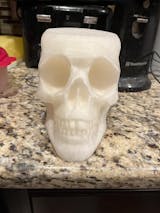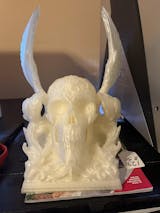Understanding the Shore Hardness Scale for 3D Filament
3D printing has opened up new possibilities for creating flexible objects. However, choosing the right filament can be a challenge, especially when it comes to flexibility. One important factor to consider is the Shore hardness scale.
What is the Shore Hardness Scale?
The Shore hardness scale is a system for measuring the hardness of materials, particularly rubbers and plastics. It is named after its inventor, Alfred Shore. There are two main Shore scales: Shore A and Shore D.
- Shore A is used to measure the hardness of soft rubbers and plastics. The scale ranges from 0 to 100, with 0 being the softest and 100 being the hardest.
- Shore D is used to measure the hardness of hard rubbers and plastics. The scale ranges from 0 to 100, with 0 being the softest and 100 being the hardest.
It is important to note that these two scales overlap, but are not the same. For instance, a material that measures 100A would be equivalent to 60D.
How is Shore Hardness Measured?
Shore hardness is measured using a durometer, which is a device that measures the resistance of a material to indentation. The durometer consists of a needle that is pressed into the material. The depth to which the needle penetrates is then measured, and this value is converted to a Shore hardness number.
What does Shore Hardness Mean for 3D Printing?
The Shore hardness of a filament is important for several reasons. It affects the flexibility of the printed object, as well as the ease of printing.
- Flexibility: Generally speaking, the lower the Shore hardness number, the more flexible the object will be. This is because softer materials are more easily bent and deformed.
- Printability: Softer filaments can be more difficult to print than harder filaments. This is because they are more prone to stringing and drooping.
- Layer adhesion: Flexible filament can give you incredibly strong parts that will be near impossible to tear apart or shatter.
Choosing the Right Filament
The right filament for you will depend on the specific application. If you need a very flexible object, then you will need a filament with a low Shore hardness number. However, if you need a more rigid object, then you can choose a filament with a higher Shore hardness number.
Here are some general guidelines for choosing a filament based on Shore hardness:
- Shore A 60-90: These filaments are very flexible and are suitable for applications where flexibility is critical.
- Shore D 30-50: These filaments are semi-flexible and are suitable for applications where some flexibility is needed but rigidity is also important.
- Shore D 50-70: These filaments are rigid and are suitable for applications where flexibility is not required.
Printing with flexible filament
It is also worth noting that the flexibility of your print will also be determined by your print settings. For instance, printing with fewer walls and infill will yield a more flexible print than a part printed solid.
60D and 40D can be printed on just about any direct drive extruder. 30D and 60A will require a more constrained filament path extruder, like the Omniadrop. No matter which flexible you use, bowden drives do not work well. Think about pushing cooked spaghetti through a straw, very difficult.
Always print slower with flexible filaments and minimize retraction speed and distance. Due the soft nature, flexible filament likes to come out at it's own pace and doesn't want to move quickly.
Conclusion
The Shore hardness scale is an important tool for understanding the flexibility of 3D filaments. By choosing the right filament, you can create objects that are as flexible as you want.




